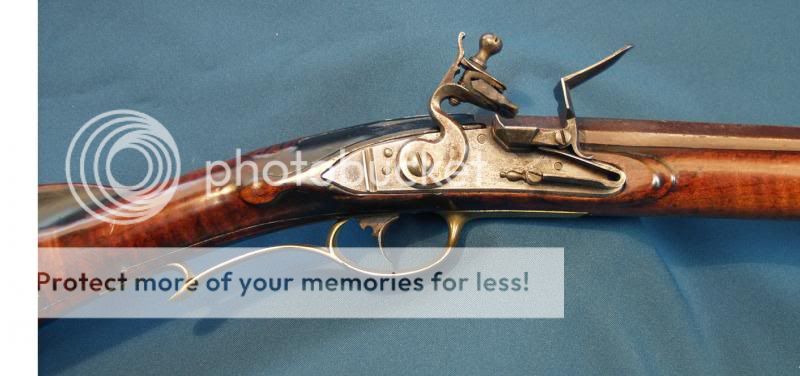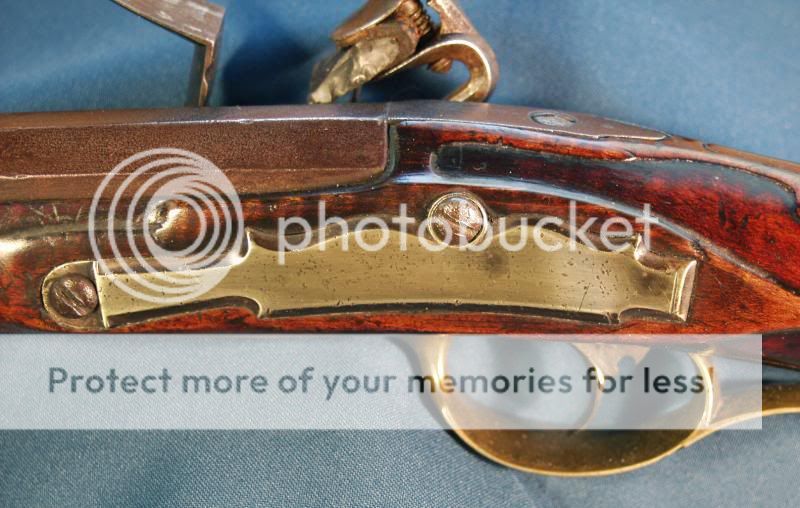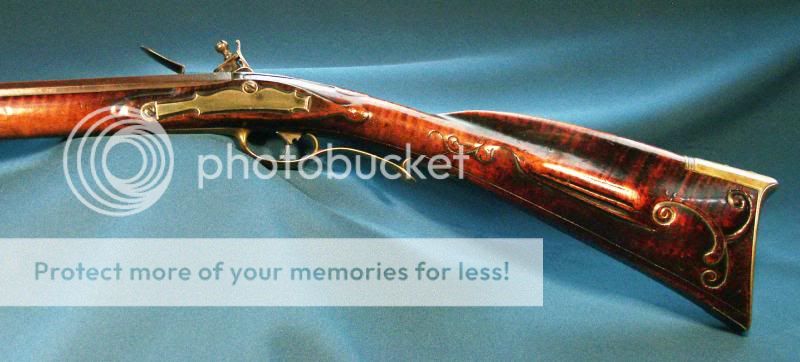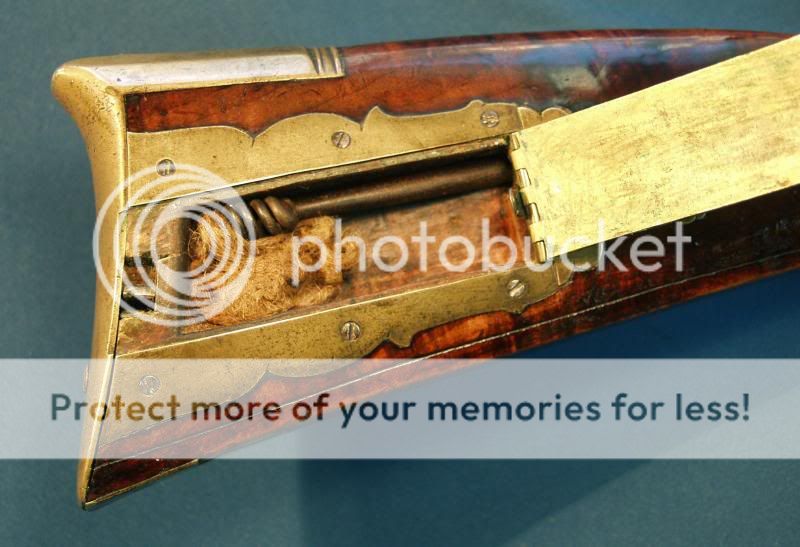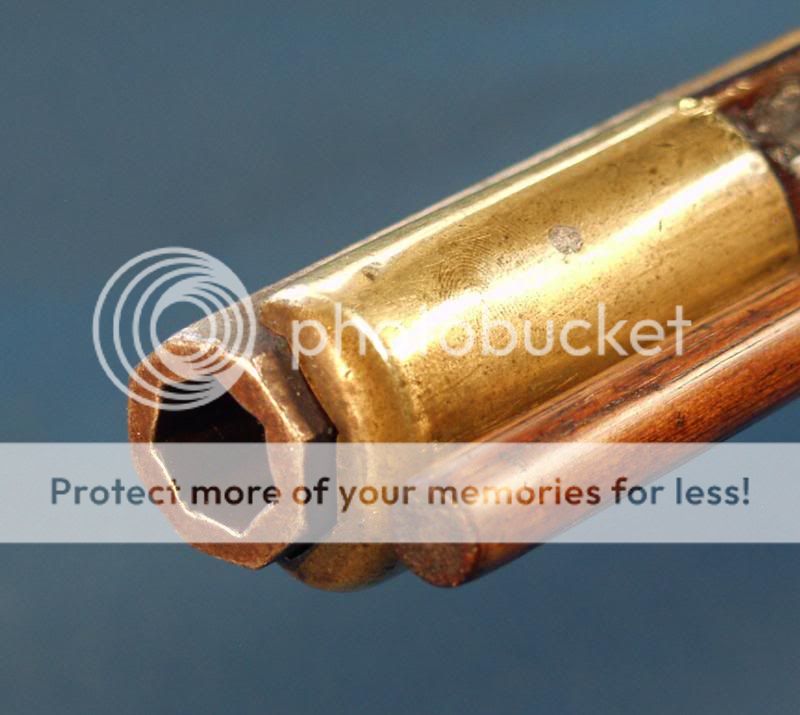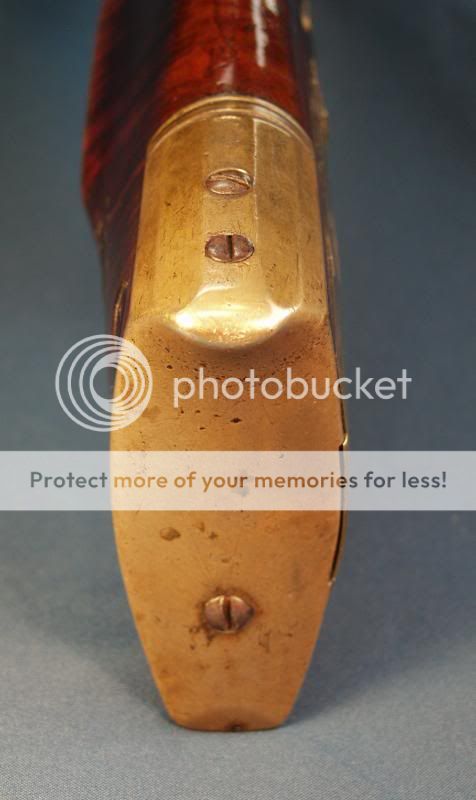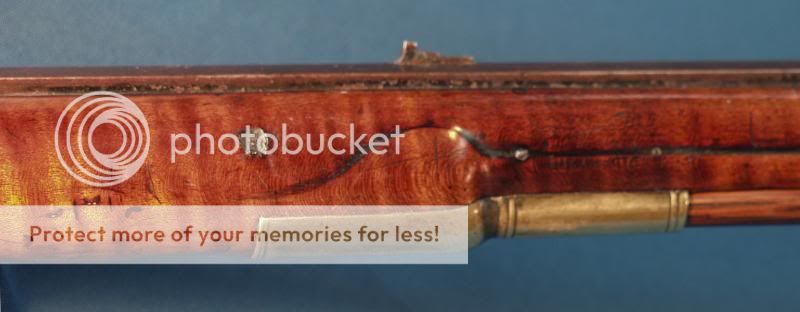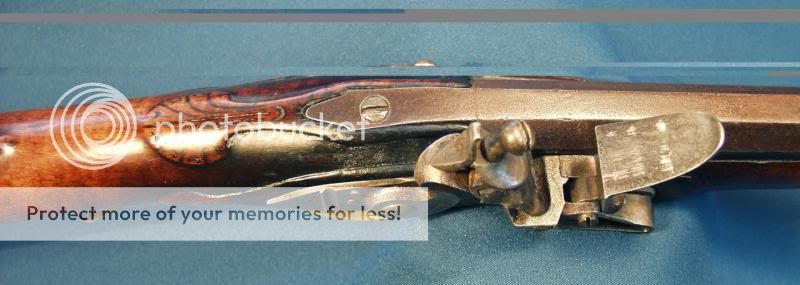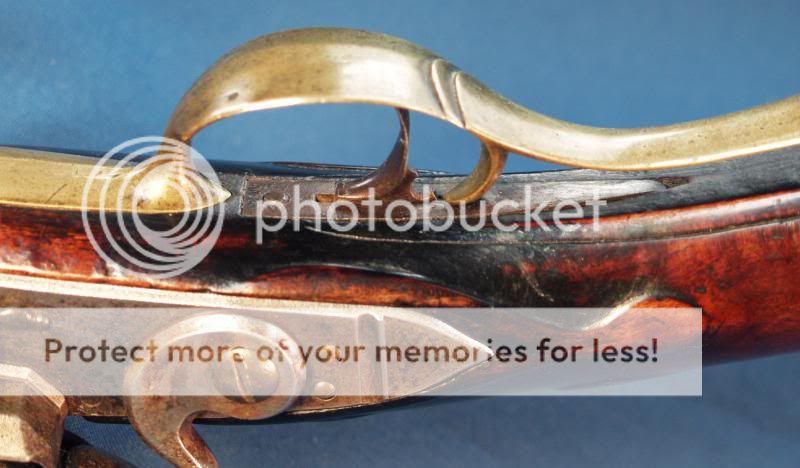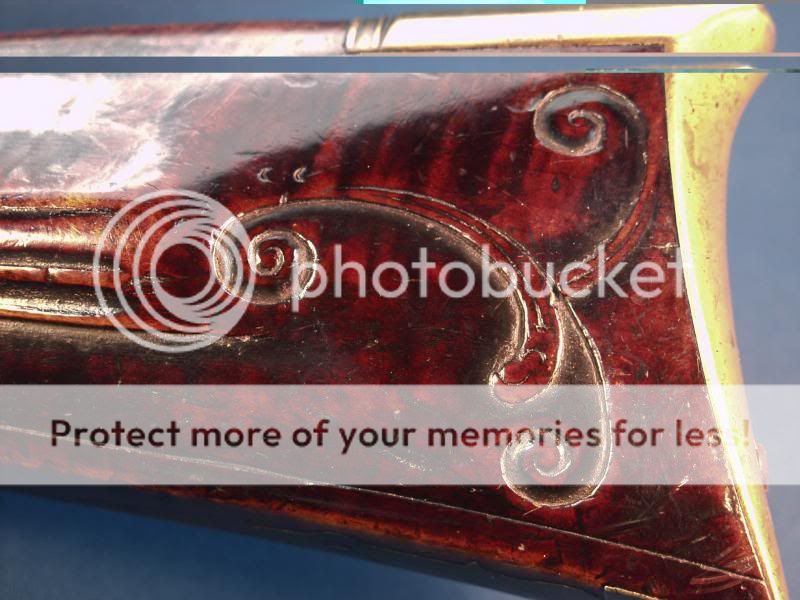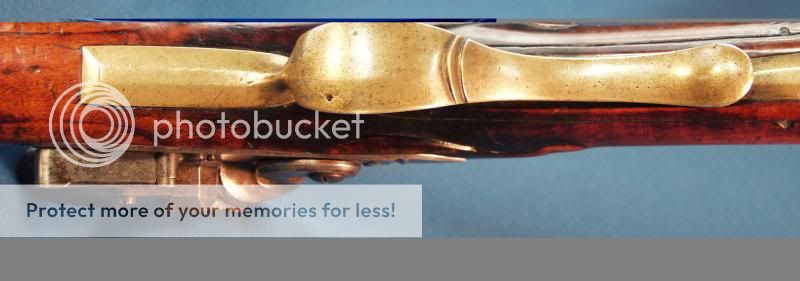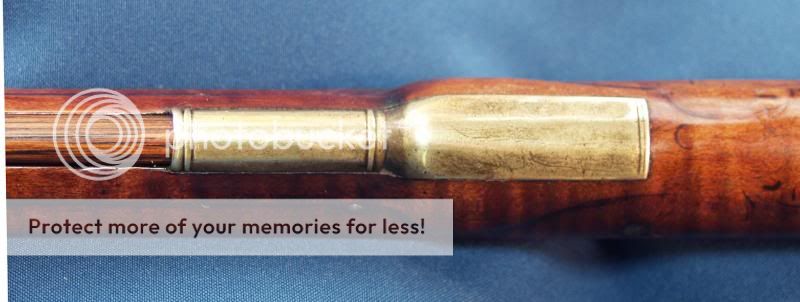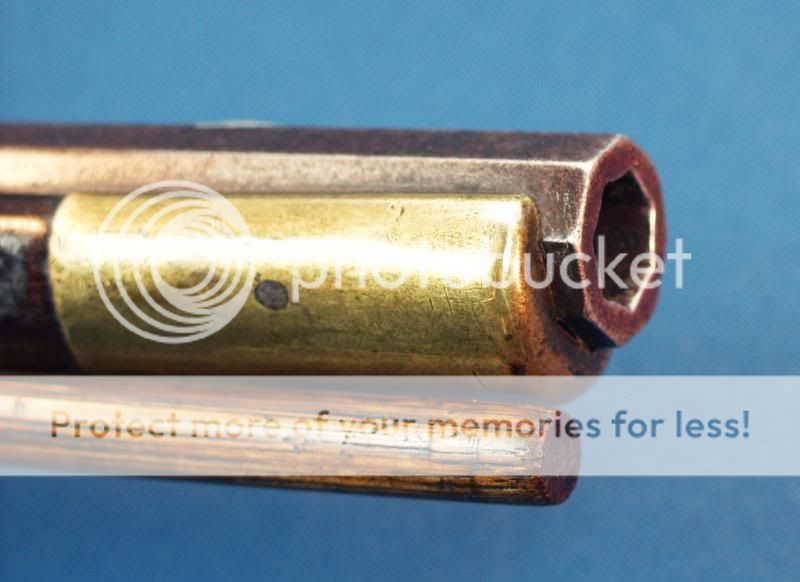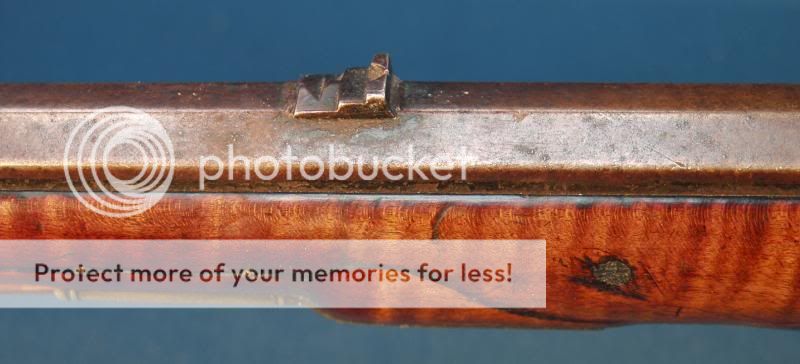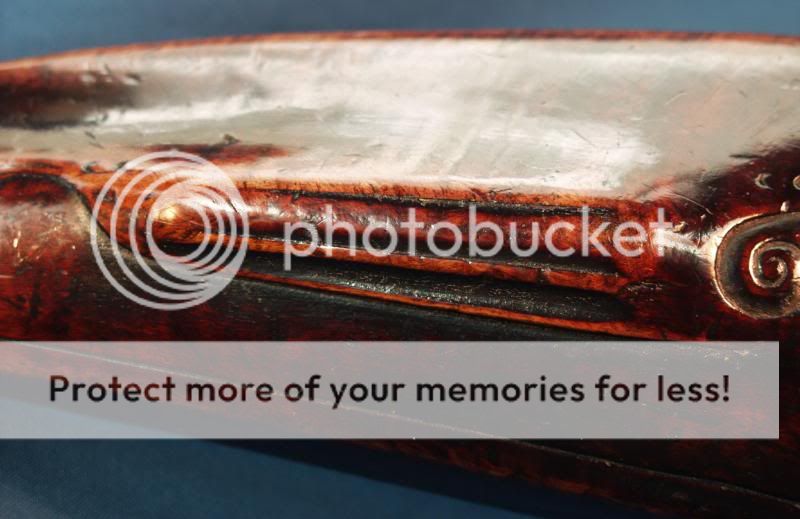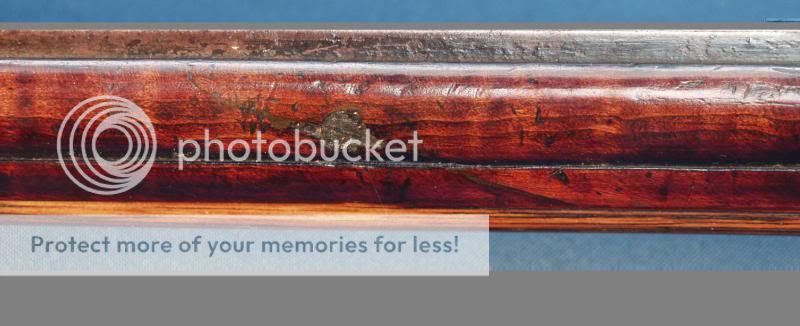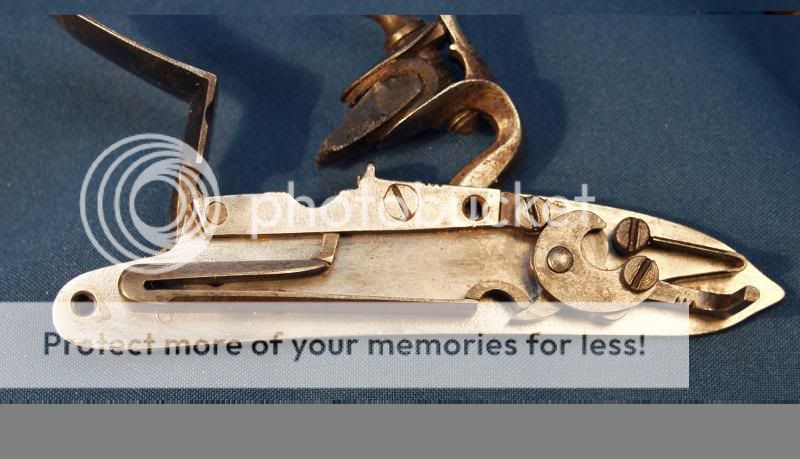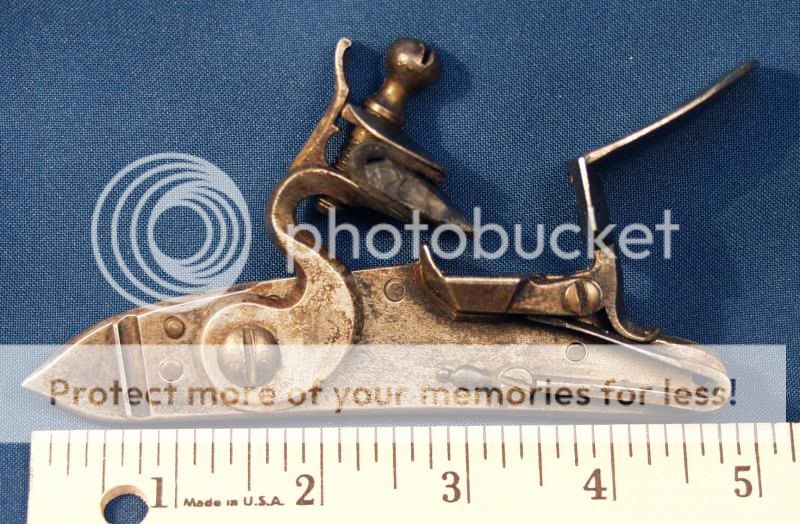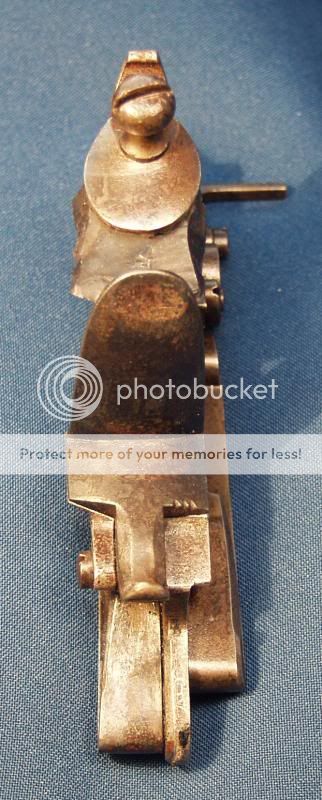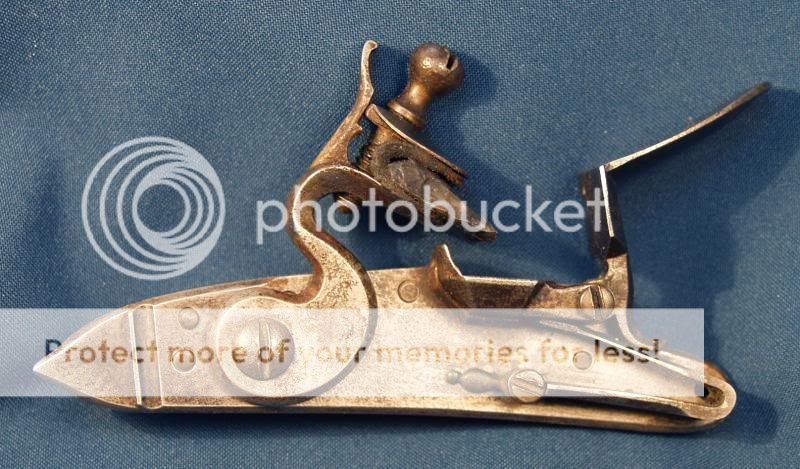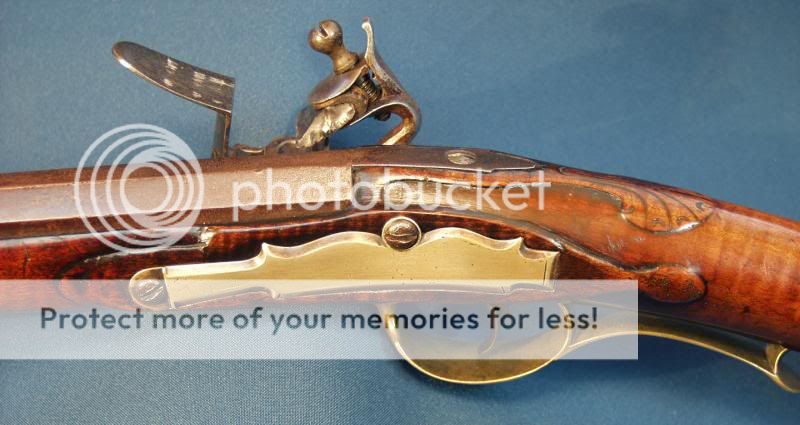

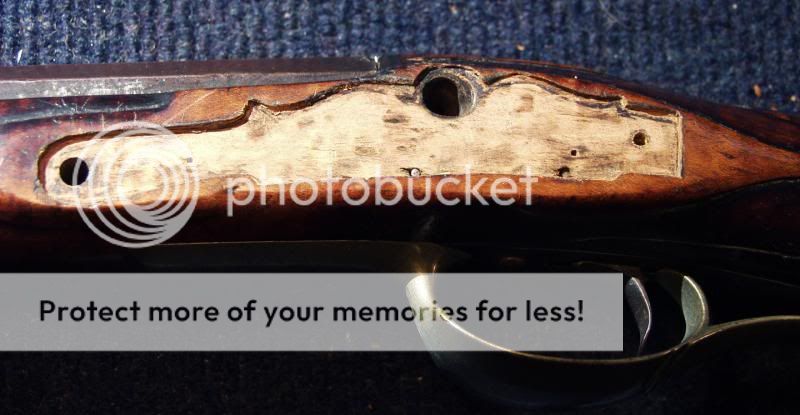
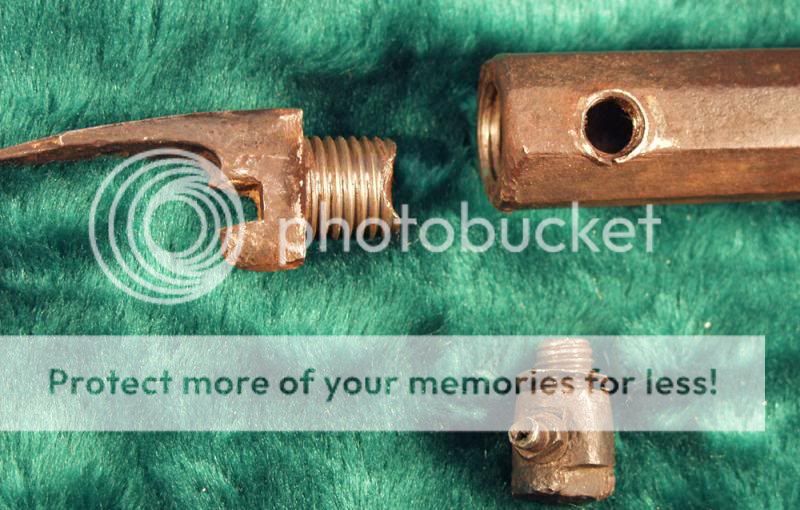
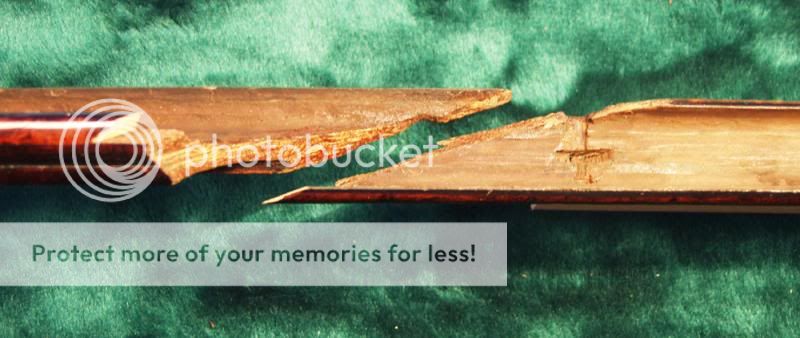
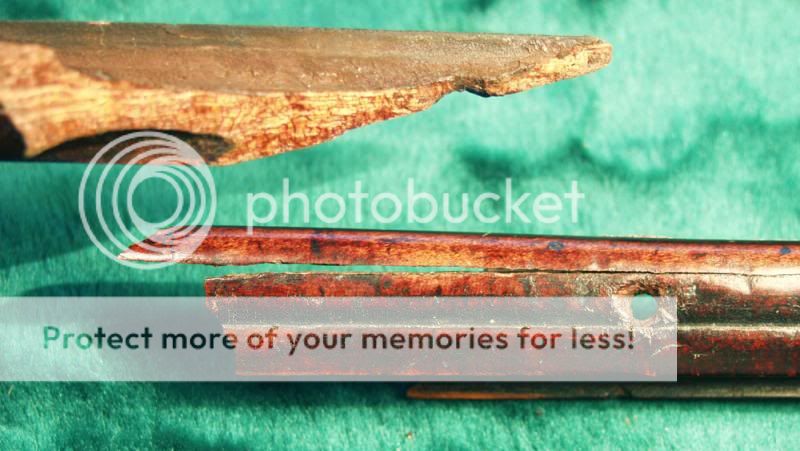
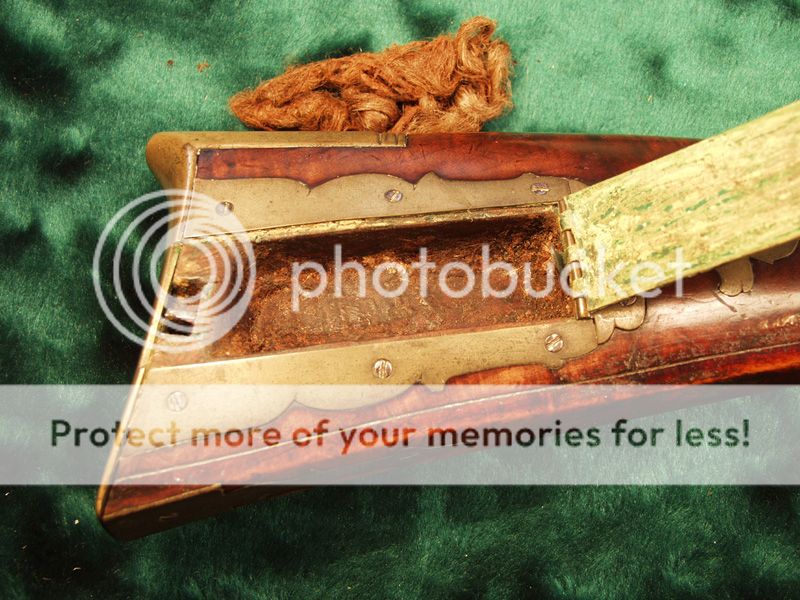


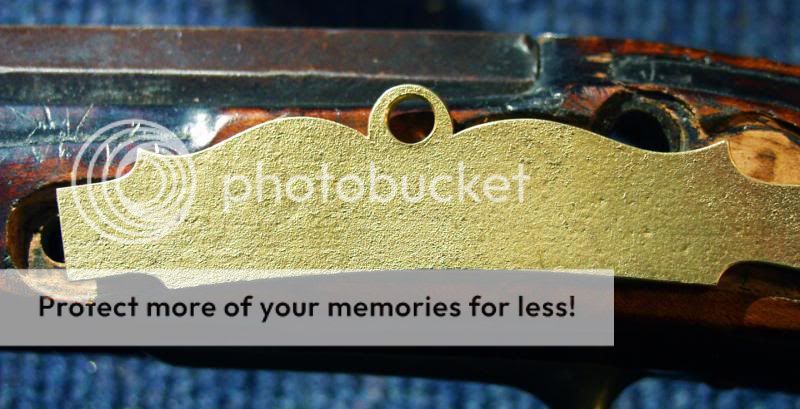
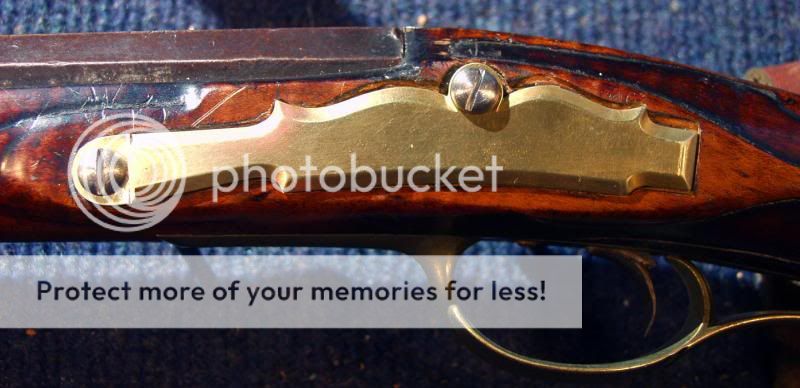
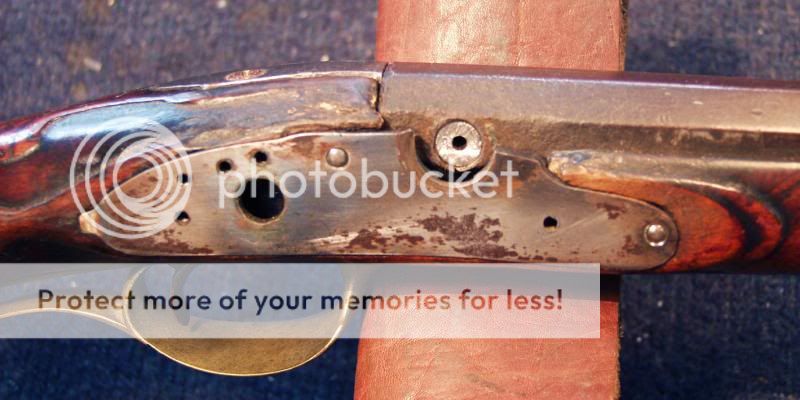
Comments on the Restoration on the, Attributed to, Wolfgang Haga Rifle Circa 1780
I believe this is an early rifle by Haga for two reasons. First note the wide butt plate as it measures a full 2" wide by 4 ½" high. The overall look of the butt area is thick and heavy.
The butt drop is 4". Second, oral family history puts this gun the hands of a Colonial rifleman
who enlisted in the militia during the American Revolution. However, we are not sure of his dates of service.
This rifle was quite a mess when I first acquired it for restoration. The before photos tell the most of that story. My first task was to establish the maker of this gun as it was unsigned. Paging through "Rifles of Colonial America, Volume 1" secured the maker to be attributed to Wolfgang Haga without any doubt. This was confirmed by sending photos to other KRA members who also agreed with my conclusions regarding maker and date. My next approach was to do a full archeological dismantling of the gun. In doing so, I made some amazing discoveries. The last person to clean this rifle left some raw "tow" in the bore. It was obvious that the gun had been cleaned regularly as the rifling and lands were in good enough shape to still be used. The bore diameter measured .480" and did not need to be freshend. The outside dimensions were surprising to me as the breech measured about 1" across the flats and there is a straight taper to the muzzle where it measured .820". The barrel length is 43 3/8". There was no sign of a swamped barrel profile. This was borne out by the barrel channel in the forestock which also had a straight taper inlet. Another surprise was that the barrel channel inlet did not have the typical five flats to receive the barrel profile. It was gouged out with a half round profile from the breech to the muzzle except for three inches at the breech end where five flats had been configured. I suspect that this rifle had been made in a hurry or by a young journeyman who worked for Haga. Also note the butt plate extension – it does not line up with the top line of the comb. This is another telltale of rapid or inexperienced assembly. The patchbox cavity revealed some very old tallow and a small ¼" longitudinal hole toward the forward end of the box. This must have been where the cleaning worm was stored. So I went through my collection of antique worms and found one which fit, not only the hole in the patchbox, but fit the bore size exactly. Then I fashioned a tapered hickory ramrod with a metal sleeve on the small end. The sleeve is threaded to receive the male threads on the antique worm. The ramrod hole which was drilled in the forestock was also done in a hurried manner as it is off center and it is too close to the forward lock bolt. Thus that bolt has to have a relief section to allow the end of the ramrod to pass underneath it.
It appears from research done by James Whisker that Haga was paid by the Pennsylvania Committee of Safety for doing gun work for Northumberland county and Berks county militia. If this rifle was made for a militia rifleman, that might explain the haste in which it was made.
I reconverted the gun to flintlock ignition, which of course, was the original. I handmade the lock plate using hacksaw and file with dimensions gained from Steven Hench. The rest of the lock was made from heavily modified Siler parts using micro welding and files. The trigger blade needed to be added to because the original was severally altered for the percussion lock.
The trigger pull distance remains the same at 13 ¼". The tang screw and lock bolts are all handmade, case hardened and antiqued. The proper side plate was sandcast by Brad Emig. New old wood was added to both the lock panel and the side plate panel.
The greatest challenge that presented itself during the restoration process was the broken forestock. When I did the initial examination, I found that the fragile forestock had been broken in many places. In fact it was now in five separate pieces lying on my bench. Some well-meaning person had tried to repair these breaks with something equivalent to "LaPages
paper glue". The fortunate part was that all of the pieces were on the bench in front of me.
No piece was missing. To put these pieces together in a proper manner, I had to remove the old crystalized glue and expose raw wood. I needed the raw wood surface for adherence to the modern glue, or in this case, epoxy. I am a firm believer in the use of modern techniques and materials to stabilize these treasures of old. This includes everything from Tig and micro welding to modern epoxies which can be easily colored to match the original color of the stock wood. All of the added parts for the restoration of this gun were blended in by doing an antiquing process of rusting, pitting and hand rubbing. Several other efforts to stabilize this old rifle were performed and are worthy to be mentioned here. First I elongated the barrel pin holes in the barrel tennons which will allow for shrinkage and expansion due to changes in humidity. These changes can easily be absorbed by old and new wood alike. Second I filled the forestock oversized pin holes with recessed dowels and redrilled the pin holes. The recessing provided a way to keep an antique look to the oversized holes. The rifle has now been totally stabilized and is ready to be fired again if the occasion ever arises.
Accompanying the rifle is an old powder horn. Again, it comes from the same local that the rifle was made and it is from the same time period. I did two repairs on the horn. The button on the nose of the butt plug was broken in half so I restored it to its original profile. The horn is a screw tip style horn with a separate spout plug which I fashioned out of an old violin peg. This was done to replace the tapered dowel which someone had made in modern times that was causing a split in the mouth of the spout. The horn measures 17 ½" across the back. The turned walnut butt plug is 2 ¾" in diameter.
I feel very honored to have had the opportunity in applying my artisanship alongside that of the master gun maker Wolfgang Haga.
H.T.
Fully Restored